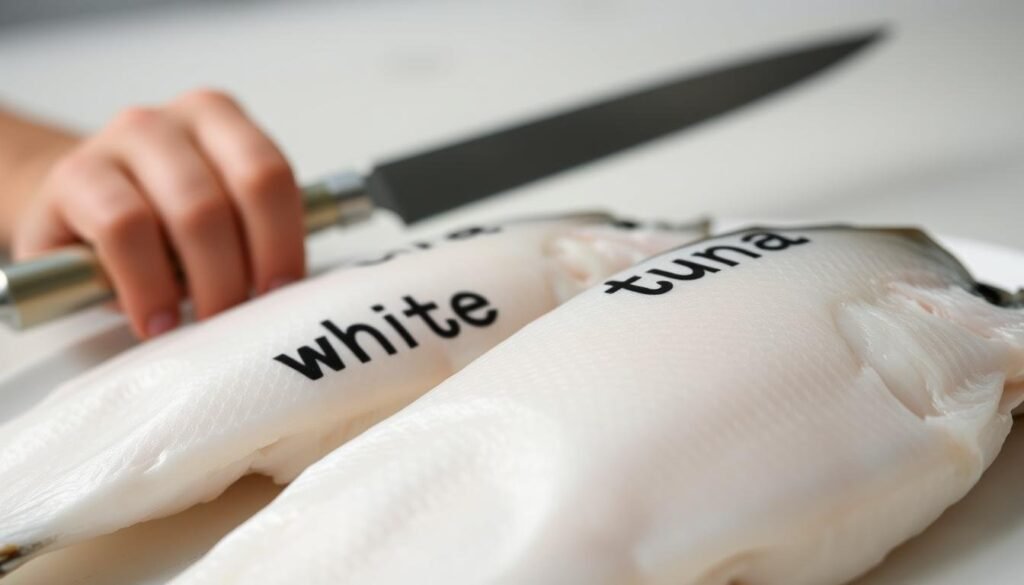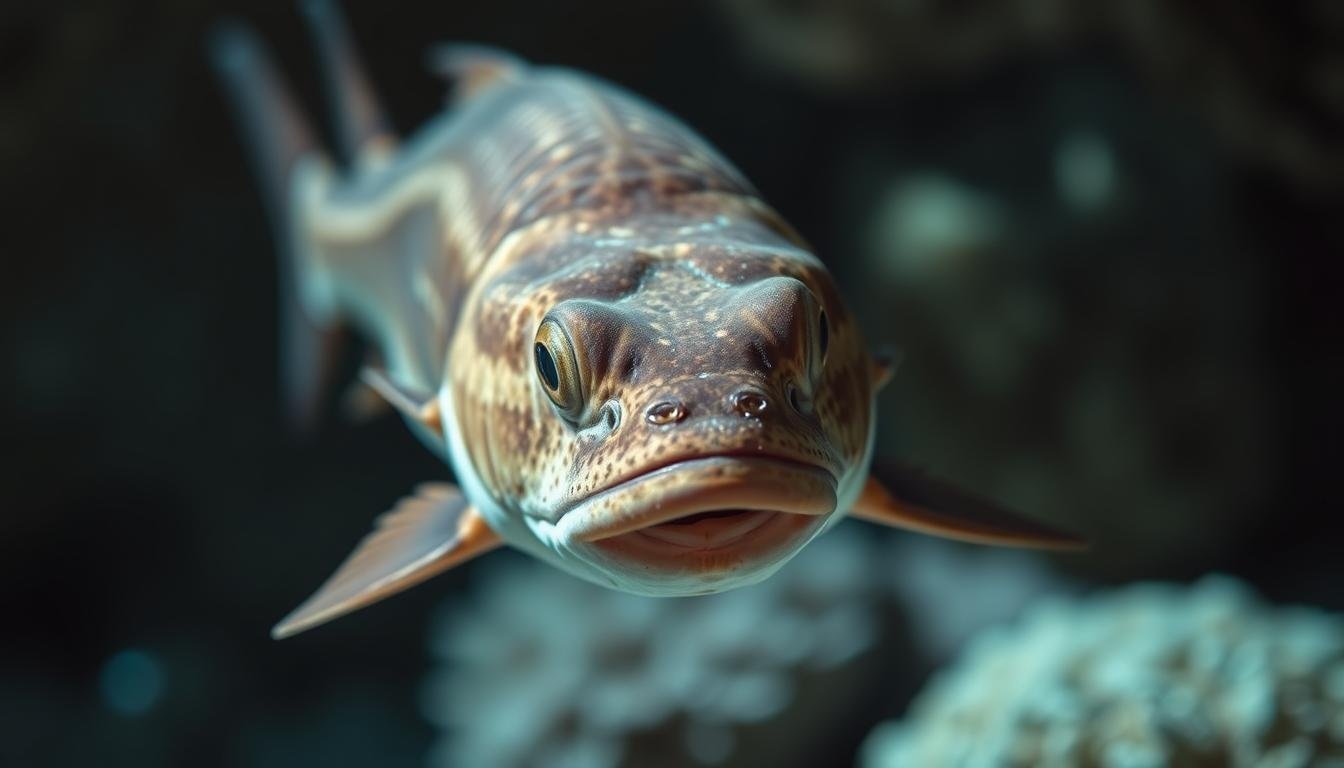You might have seen escolar fish on menus or heard about its controversy. Japan banned this fish, and it’s caught the world’s attention. The ban is due to scientific findings and health risks linked to escolar.
The story of escolar fish is complex. Japan chose to ban it to keep people safe. Learning about the dangers of escolar helps us understand Japan’s actions.
This article will explore escolar fish in depth. You’ll get a full picture of the situation.
Contents
- 1 The Controversial “Butterfish”: What is Escolar?
- 2 Why is Escolar Banned in Japan: The Scientific Explanation
- 3 Japan’s Regulatory History with Escolar
- 4 Health Consequences of Consuming Escolar
- 5 Global Perspective: Escolar Regulations Worldwide
- 6 Deceptive Marketing: The “White Tuna” Problem
- 7 Preparation Methods and Consumption Limits
- 8 Conclusion: Understanding Japan’s Precautionary Approach
- 9 FAQ
- 9.1 What is escolar, and why is it called "butterfish"?
- 9.2 Why is escolar banned in Japan?
- 9.3 What are wax esters, and how do they affect the human body?
- 9.4 Are there any long-term health effects of consuming escolar?
- 9.5 How do other countries regulate escolar?
- 9.6 What is the "white tuna" problem, and how does it relate to escolar?
- 9.7 Are there guidelines for safely consuming escolar?
- 9.8 What can consumers do to avoid unknowingly purchasing escolar?
The Controversial “Butterfish”: What is Escolar?
Escolar is a deep-sea fish found in both warm and cool waters. It’s known as “butterfish” because of its buttery taste. But what makes this fish so special?
Escolar is loved for its high fat content, making it a favorite in many dishes. But this trait also sparks debate. Let’s dive into its nutritional profile to see why Japan banned it.
Nutritional Profile of Escolar
- High in unsaturated fats, particularly wax esters
- Rich in protein and various minerals
- Contains significant amounts of omega-3 fatty acids
Escolar’s fat content is both a blessing and a curse. It adds a rich flavor but can also be harmful. Knowing about escolar’s nutrition helps us understand Japan’s ban on it.
Why is Escolar Banned in Japan: The Scientific Explanation
Japan banned escolar because of its high wax ester content. Escolar, known as “white tuna” or “rudderfish,” has a lot of wax esters. These compounds are hard for the body to digest and can cause stomach problems.
Wax esters in escolar are not digested by the body. They can lead to diarrhea, nausea, and stomach pain. This makes escolar a health risk, leading to Japan’s ban.
When eaten, the wax esters in escolar go through the body without being broken down. This can cause stomach issues. Escolar’s unique makeup makes it different from other fish and highlights its health risks.
Health authorities around the world are concerned about escolar’s health implications. Japan’s ban shows their effort to protect people from its potential health effects. The wax esters in escolar are a big concern.
Japan’s ban on escolar shows the importance of knowing a food’s unique traits. It reminds us of the need for strict food regulations. This helps keep everyone safe from harmful foods.
Japan’s Regulatory History with Escolar
To understand Japan’s view on escolar, we need to look at its past rules. Japan has always been strict about food rules. Escolar has been a big part of these efforts.
Over time, Japan has taken steps to control escolar sales and use. This is because of worries about its safety.
The history of escolar rules in Japan is filled with important moments. One big step was making stricter labels for escolar products. This was to stop wrong labels and make sure people knew what they ate.
| Year | Regulatory Action | Impact |
|---|---|---|
| 2000 | Initial ban on escolar sale | Reduced availability |
| 2005 | Stricter labeling requirements | Increased consumer awareness |
| 2010 | Enhanced monitoring of escolar products | Improved safety standards |
These steps show Japan’s careful handling of escolar risks. Looking at Japan’s escolar rules history helps us understand its cautious view on this fish.
Health Consequences of Consuming Escolar
Escolar, often called “white tuna,” can be harmful if eaten too much. It contains wax esters that can cause oily diarrhea and other symptoms. You might also feel sick to your stomach or throw up after eating it.
Eating too much escolar can lead to bigger health problems. It’s important to know these risks to choose better foods for your diet.
Long-term Effects of Consuming Escolar
Regularly eating escolar can build up wax esters in your body. This buildup might harm your digestive system and overall health. Be careful about how often and how much escolar you eat.
To avoid health issues from escolar, eat it less often. If you get sick after eating it, see a doctor. Knowing the risks helps you make better food choices.
Global Perspective: Escolar Regulations Worldwide
Across the globe, rules for escolar are mixed. Some countries ban or limit escolar, following Japan’s example. Others are more relaxed about it.
Escolar rules differ a lot in different places. For example:
- In Australia, escolar is not banned, but its sale is subject to certain labeling requirements.
- The United States allows the sale of escolar, but it must be labeled correctly to avoid misleading consumers.
- In Canada, escolar is not prohibited, but there are guidelines for its sale and labeling.
Different countries have different views on escolar. This shows that the debate over escolar is not just in Japan. Each country has its own way of dealing with escolar’s challenges.
Looking at these global views helps us understand escolar’s complex issues. By seeing how countries handle this fish, we learn about the many ways to ensure food safety and protect consumers.
Deceptive Marketing: The “White Tuna” Problem
Deceptive marketing has led to escolar being sold as ‘white tuna.’ This poses health risks to people who don’t know. The issue is not just about false ads. It’s also about the health dangers of eating escolar.
If you buy ‘white tuna’ at the market or order it at a restaurant, you might get escolar. This mislabeling is common. It affects those looking for healthier or cheaper tuna options.

This problem is big for regulators. It makes it hard to manage the risks of eating escolar. They are trying to fix it with stricter labels and enforcement.
To keep yourself safe, know what you’re eating and check labels. Here are some tips:
- Look for the scientific name of the fish on the label.
- Be wary of very cheap ‘tuna’ products.
- Ask where your ‘white tuna’ comes from.
By being careful, you can avoid eating escolar labeled as ‘white tuna.’
Preparation Methods and Consumption Limits
To enjoy escolar safely, knowing the right preparation and limits is key. Escolar has a lot of wax esters, so handling it carefully is important to avoid health risks.
When cooking escolar, using the right methods is crucial. Grilling or broiling can cut down on fat, which might lower the risk of stomach problems. But the best way to lower wax esters is through proper filleting, removing the fattiest parts.
Guidelines for Consuming Escolar
If you decide to eat escolar, follow these tips:
- Keep your portions small to avoid overeating.
- Go for escolar that’s been filleted well to cut down on wax esters.
- Stay away from escolar if your stomach is sensitive or you have stomach issues.
| Preparation Method | Effect on Wax Ester Content | Recommended Consumption Frequency |
|---|---|---|
| Grilling/Broiling | Reduces fat content | Occasional |
| Proper Filleting | Significantly reduces wax ester | Moderate |
| Frying | No significant reduction | Rare |
By following these guidelines, you can lower the risks of eating escolar. Always be careful and informed when adding this fish to your meals.
Conclusion: Understanding Japan’s Precautionary Approach
You now know why escolar is banned in Japan. This ban is due to the fish’s potential health risks. Japan’s rules on escolar are a model for other countries facing similar food safety challenges.
Looking at Japan’s stance and the global view on escolar, you’re ready to talk about food safety and rules. This knowledge helps you understand the importance of protecting public health.
FAQ
What is escolar, and why is it called "butterfish"?
Escolar is a deep-water fish known for its high fat content. This gives it a rich, buttery flavor. It’s called “butterfish” because of this.
Why is escolar banned in Japan?
Japan banned escolar because of its wax esters. These compounds are hard to digest. They can cause health problems.
What are wax esters, and how do they affect the human body?
Wax esters are compounds in escolar that are hard to digest. They can cause oily diarrhea. This is known as “keriorrhea.”
Are there any long-term health effects of consuming escolar?
Yes, eating escolar can cause short-term discomfort. It can also lead to long-term health issues because of its wax esters.
How do other countries regulate escolar?
Countries have different rules for escolar. Some ban it like Japan, while others are more lenient.
What is the "white tuna" problem, and how does it relate to escolar?
The “white tuna” problem is when escolar is labeled as “white tuna.” This can trick consumers into eating it. It’s risky because of its health issues.
Are there guidelines for safely consuming escolar?
Yes, there are ways to eat escolar safely. Knowing how to prepare it and how much to eat can help. But Japan has banned it altogether.
What can consumers do to avoid unknowingly purchasing escolar?
To avoid escolar, know its common mislabeling. Also, check the fish’s authenticity before buying.

Marcellus Stark is an investigative journalist from San Francisco, USA. He writes about global bans, rules, and unusual laws. He shares clear, interesting, and well-researched stories that help readers understand surprising facts worldwide.

